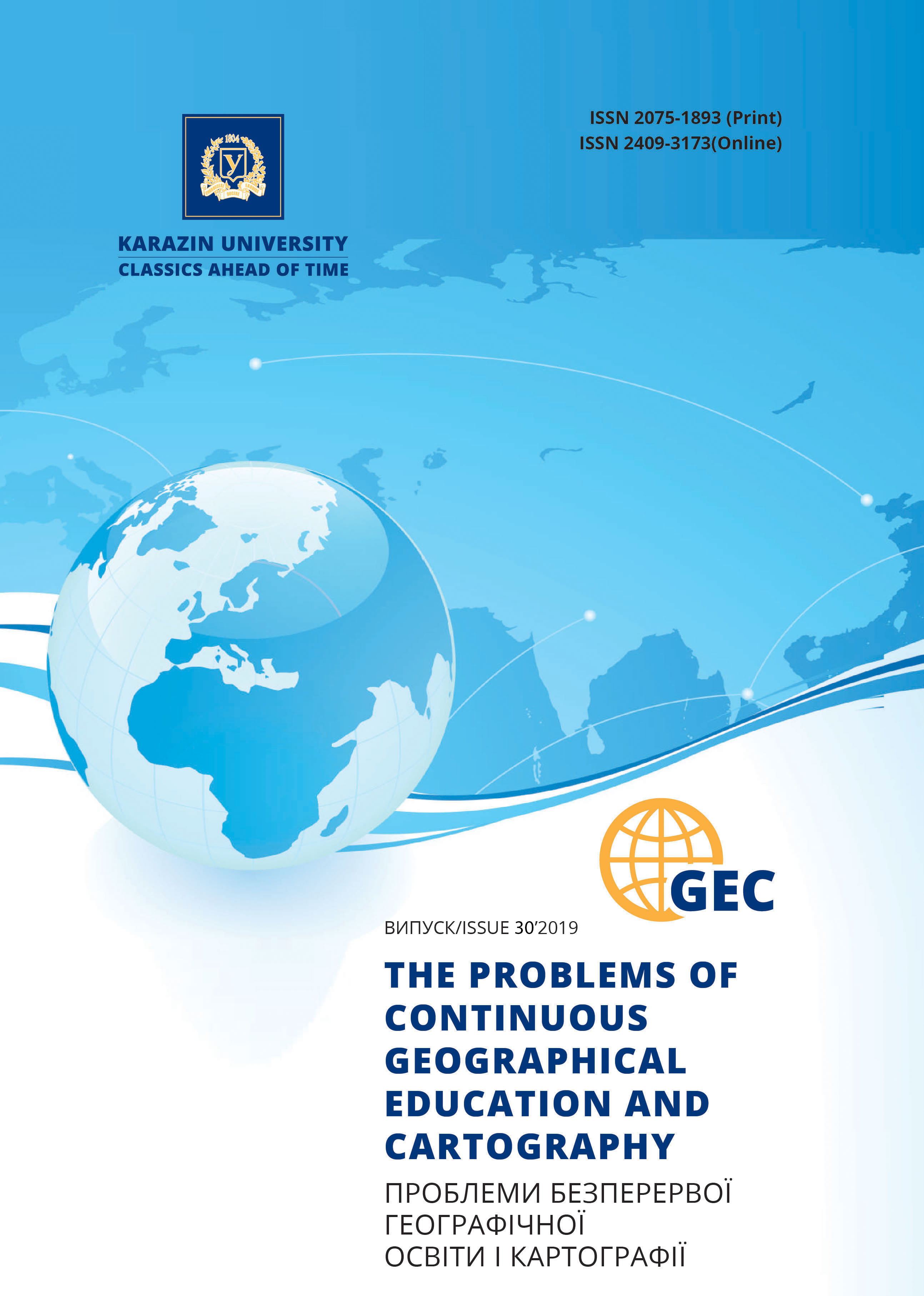The use of non-traditional visual means of education in the formation of meteorological and climatic concepts in school geography
Abstract
The purpose of this article is to highlight the methodology of formation the meteorological and climatic concepts in school geography through the use of new teaching tools.
Main material. The article describes visual methods of meteorological and climatic concepts formation in the course of school geography. Unconventional visual tools to be used in learning the following concepts at school: animated maps, dynamic schema, climate diagrams, logic model are considered in the article.
The experience of teaching the weather and climate, analyzing the basic concepts that are diffi cult to assimilate by students has been described. Analysis of psychological and age features of school students, their interest in studying these subjects as well as the experience of using animation in the study of school geography, positive and negative factors of animation manuals are outlined. It is shown how to use animation at the lessons of formation of meteorological and climatic concepts. The options for its use at the lessons on the study of weather and climate have been proposed. The possibility of further use of the developed materials in the classroom and in extracurricular activities of secondary schools has been shown.
Conclusions and prospects for further research. The use of new visual tools for the formation of meteorological and climatic concepts in the classroom of school geography may interest pupils in the study of new topics. This not only develops pupils’ ideas, but also establishes a logical link between the phenomena. The advantages of using the proposed means of education over traditional means, in our opinion, are signifi cant. But the study of the teachers’ experience shows that very few of them use the latest tools and for various reasons prefer traditional means of education. The reason may be that the new tools require much more time to prepare than the traditional tools. This applies primarily to the creation of new animated maps, dynamic diagrams, search for new information. In the future, we will develop didactic tools linking specifi c types of climate and their graphical representations with the corresponding landscapes of continents.
Downloads
References
Davydova, I.P., Djudin, S.E. (2007). Animacionnye tehnologii i ih primenenie v shkole [Animation technologies and their application at school]. Informatics and Education, 12, 35-39.
Topuzov, O.M., Samojlenko, V.M., Vishnikina, L.P. (2012). Zagal`na metody`ka navchannya geografiyi: Pidruchny`k [General methods of teaching geography: Textbook]. Ky`yiv: DNVP «Kartografiya», 512.
Kut`ko, M.A. (2006). Meteorologo-klimaty`chni ponyattya: posibny`k dlya uchniv 6-8 klasiv [Meteorological and climatic concepts. A guide for pupils of forms 6-8]. Xarkiv: XNU im. V.N. Karazina, 88.
Lizinskij, V.M. (2002). Priemy i formy v uchebnoj dejatel’nosti [Techniques and forms of educational activity]. Moskva: Pedagogicheskij poisk, 193.
My`xajlenko, M.M. (1973). Vy`vchennya pogody` ta klimatu v shkil`nomu kursi geografiyi [Study of weather and climate in school geography course]. Ky`yiv: Radyans`ka shkola, 119.
Nazarenko, T.G. (2016). Metody`ka navchannya geografiyi Ukrayiny` v zagal`noosvitnix navchal`ny`x zakladax (osobly`vosti navchannya) [Methods of teaching geography of Ukraine for General educational establishments (especially education)]. Xarkiv: Osnova, 112.
Shemy animacii (2003) [Animation schemes]. Available at: http://www.ms2003office.ru/off22/Index11.htm
Lisickij, D.V., Horoshilov, V.S., Kolesnikov, A.A. (2014). Animacionnaja kartografija – sushhnost’, harakteristiki i perspektivy kartografii [Animation cartography – the essence, characteristics and prospects of cartography]. Proceedings of High Scools. Geodesy and Aerial Photography, 4/C, 91-97.
Lisickij, D.V., Komissarova, E.V., Kolesnikov, A.A., Sharypova. M.N. (2016). Dvuhmernye animacionnye kartograficheskie proizvedenija [2-D animation cartographic works]. Available at: https://docplayer.ru/60576396-Dvuhmernye-animacionnye-kartograficheskieproizvedeniya.html
Copyright (c) 2019 Маргарита Ільїна, Олександр Жемеров

This work is licensed under a Creative Commons Attribution 4.0 International License.





